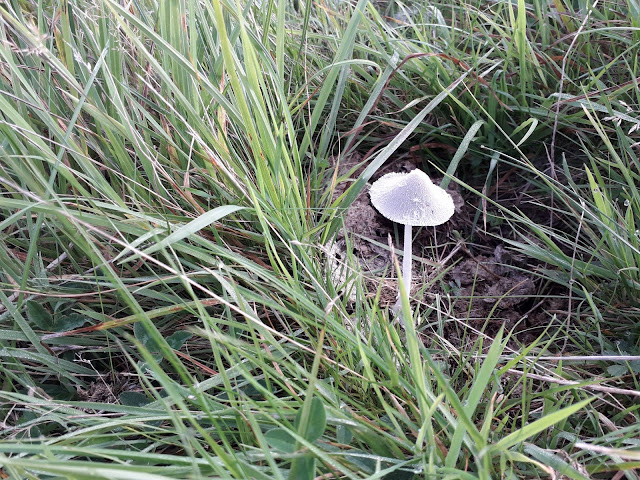They are single celled creatures that group together and move in their quest for food which is bacteria, yeasts and other decay organisms. Read more about them on the woodlands.co.uk website
News about seasonal changes at Filnore Woods and how to get involved as a volunteer, if you want to. As well as things seen and done at FILNORE WOODS, THE BLOG WILL INCLUDE THINGS YOU CAN SEE IN YOUR STREET OR GARDEN. To get regular updates, you used to be able to enter your email address in "FOLLOW BY EMAIL" (just below on the right) But this seems to have stopped working so GOOGLE 'FILNORE WOODS BLOG' AND FOLLOW 'FILNORE WOODS' ON FACEBOOK
Saturday 31 October 2020
PINK FUNGI
Friday 30 October 2020
VIEW
Tuesday 27 October 2020
CRABS
APPLES
Sunday 25 October 2020
A LONG POST

Post 9 disappears and re-appears on a regular basis after being replaced in its hole several times. It's back again now but for a back-up we shall paint the number on the oak tree (below left), but the bark is not so smooth.
Post 10 on an even younger oak. The paper label is wearing out so we must get painting.
Post 11 rotted off so the end will be sawn off and a shorter post reinstated.
Post 12 is fine, and the next sign pointing the way to posts 13 -20.
BEECH
Saturday 24 October 2020
VElVET SHANK FUNGUS
Friday 23 October 2020
GUELDER ROSE
Thursday 22 October 2020
GARDEN CROSS SPIDER
Sunday 18 October 2020
MOUSE
Friday 16 October 2020
TOAD IN THE HOLE
Wednesday 14 October 2020
BITTERSWEET
Tuesday 13 October 2020
SPINDLE BERRY
Monday 12 October 2020
ALLAN BURBERRY
Readers of the blog will be interested to hear that one of the founders of Filnore Woods, Allan Burberry, who died earlier this year, is now commemorated by a bench seat installed in a sloping field overlooking Thornbury and the surrounding countryside, which he loved and did so much to maintain for wildlife.
A plaque attached to the seat draws attention to his contribution.
The seat was funded by contributions from several people who knew him, from his family and from the town council, who undertook the installation of the seat and the re-instatement of soil eroded by human and bovine feet over many years.
Friday 9 October 2020
FUNGUS FOUR
Thursday 8 October 2020
FUNGUS THREE












































